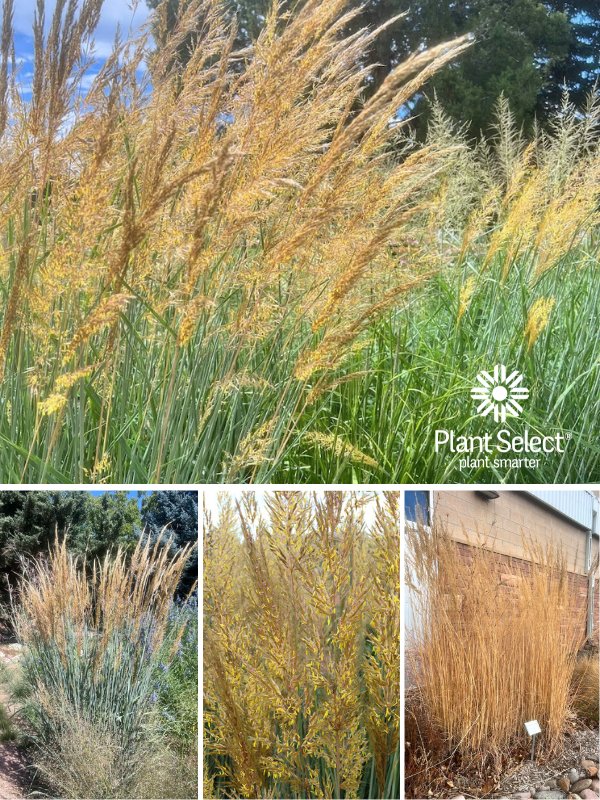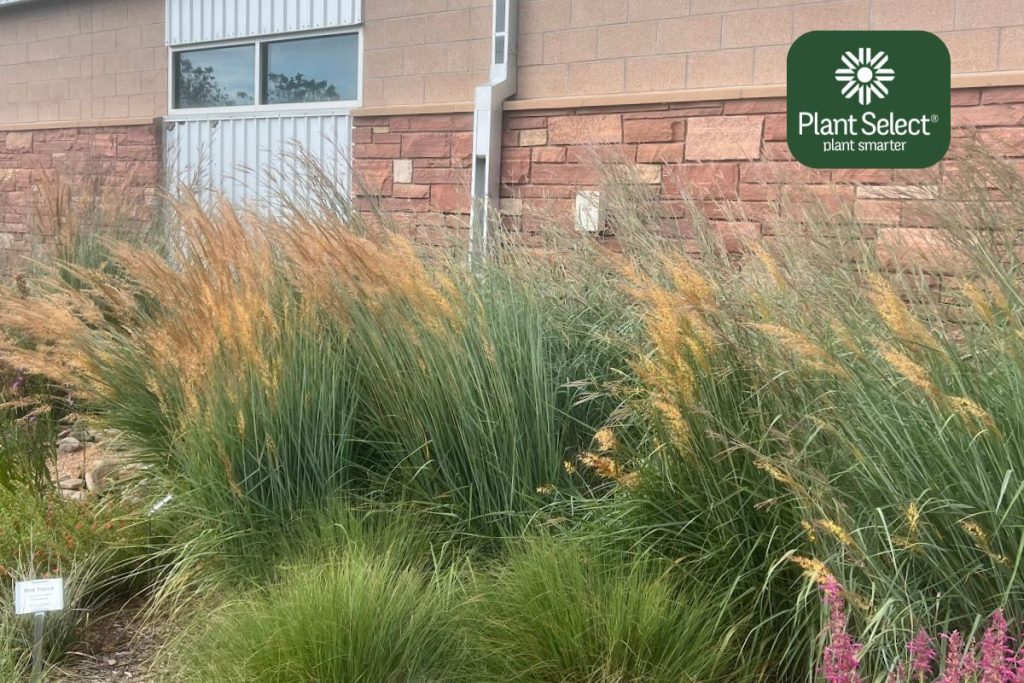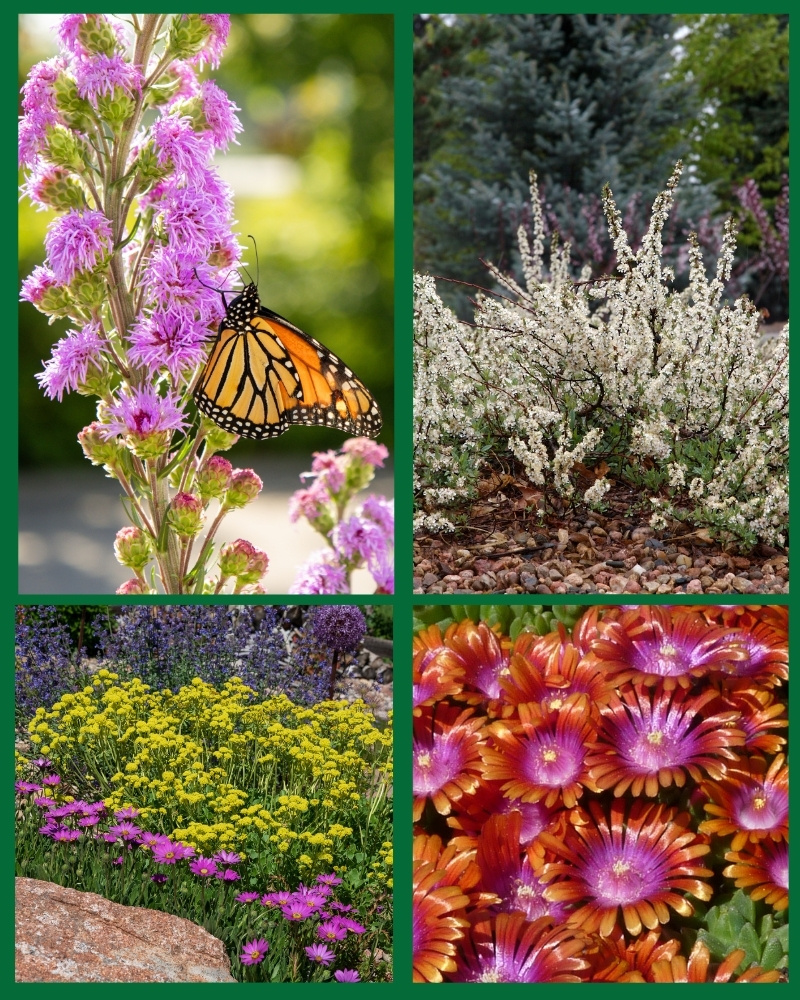A Native Alternative to Karl Foerster Grass
Discover the perks of Thin Man golden prairie grass!
Stroll through your neighborhood, and you’re bound to see Karl Foerster feather reed grass (Calamagrostis × acutiflora ‘Karl Foerster’) standing tall. It’s the Starbucks of the plant world—present on every corner… and in many yards in-between.
Discovered in the 1930s by a plantsman named Karl Foerster, Karl Foerster feather reed grass is a naturally-occurring hybrid of two species native to Europe and Asia. Here in the Rocky Mountain region, this popular grass tolerates our tricky clay soils, and it holds up well to our erratic western weather.
But is it the best upright grass for our western landscapes?
What if you could find a similar-looking grass with more benefits? Wouldn’t it be nice to mix up your grass game with an upright grass that uses less water and has more benefits for pollinators, birds and wildlife?

Allow us to share a good alternative to Karl Foerster grass…
Thin Man golden prairie grass
(formerly, Indian grass)
Sorghastrum nutans ‘Thin Man’ PP28,923
Thin Man golden prairie grass is a beautiful, drought-tolerant, native grass that offers multiple seasons of interest and acts as a natural bird feeder.
Thin Man is a Sorghastrum nutans—a tall, clumping grass that’s native to most of the United States, including Colorado, Utah and Wyoming. This perennial, warm-season grass adapts well to a variety of soils, including clay. It has broad, blue-green foliage and an upright growth habit.

What makes this grass special
Thin Man golden prairie grass was selected from a population of Sorghastrum nutans growing in eastern New Mexico near the Texas border. It’s special because it:
- Is especially tolerant of dry growing conditions. It’s much more drought tolerant than the Eastern and Midwestern forms of Sorghastrum nutans, as well as Karl Foerster grass. In fact, it’s best with less water.
- Stands up well to wind.
- Has a narrow footprint. It was selected for its narrow, upright habit. Typically, it grows 2’ to 2.5’ wide, making it a good fit for both small and large gardens.
‘Thin Man’ also supports local wildlife. Even though grasses are wind pollinated, it’s common to see bees on the golden florets, gathering pollen. Songbirds and small mammals will feed on the seeds. And with its height and upright habit, ‘Thin Man’ offers a nesting area and cover for native bees and birds.

Cool season vs. warm season grass
Karl Foerster grass is a cool-season grass, so it greens up and grows in the spring when temperatures are cool.
In contrast, Thin Man golden prairie grass is a warm-season grass. It finds its groove during our summer heat, growing 2’ to 3’ tall. Then, in the late summer, it rises 5’ to 6’ tall, producing golden inflorescences that dance in the wind. As the seasons change, its foliage changes from a blue-green hue to an orange-purple hue.
Thin Man golden prairie grass is a beautiful grass that should be used more often! Look for it as a beneficial alternative to Karl Foerster grass.
Success tips:
- As a warm-season grass, Thin Man golden prairie grass is best planted in the spring or summer, rather than the fall.
- In an urban setting in the Rocky Mountain region, a little water makes ‘Thin Man’ look better, but don’t overdo it. Once the grass is established, keeping the water low helps the plant stay in an upright form and enhances the blue color.
- If ‘Thin Man’ gets too much water, it can get floppy and turn into a happy seed spreader.
Get details on Thin Man golden prairie grass here >
Ask for Sorghastrum nutans ‘Thin Man’…
… at your local Plant Select retailer, online retailer or wholesale nursery.
If they don’t have it stock, please let them know you want it. Public interest can help influence what retailers grow and/or order.



